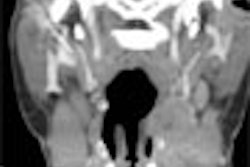Dear CT Insider,
What's the best modality for evaluating suspected cerebrovascular disease? The answer depends on any number of factors, from the patient's age and medical history to the presentation and presence of co-factors and co-morbidities.
Indeed, the choice of modality often boils down to the radiologist's suspicion of just what might be wrong with the patient, which is where experience and judgment and the art of medicine take center stage.
From this murky brew Dr. Jay Cinnamon built a framework for the decision-making process in a recent presentation in San Francisco. Analyzing cases by modality, by patient profile, and by disease process, Cinnamon, a neurovascular radiologist from Quantum Radiology Northwest in Marietta, GA, illustrated the decision-making process aimed at optimizing care while minimizing patient risk.
Not surprisingly, CT fared well for many indications. Find out more in this issue's CT Insider Exclusive, published for our subscribers before they are made available to the general AuntMinnie.com readership.
Radiologists from Vanderbilt University in Memphis, TN, are getting superb neck imaging results with a very simple MDCT technique. Meanwhile down at the chest, researchers presenting at the recent American Thoracic Society meeting looked at CT and some alternatives for pulmonary embolism diagnosis in their efforts to optimize diagnostic decision-making and minimize unnecessary scanning. Scans happen, however, and it's critical to look at the breast tissue anytime a female patient undergoes chest or heart CT. Dr. Jeffrey Mendel, from Caritas St. Elizabeth's Medical Center in Boston, shows you how.
Germans are worried about excessive CT scans, according to another story, while a new paper in Journal of the American Medical Association predicts a troubling increase in cancer risk for young patients undergoing cardiac CT angiography.
Of course there's more. Just scroll down to read 58 other stories in your CT Digital Community.




















